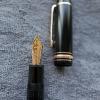Montblanc Fountain Pens And Nib Flexibility
-
Forum Statistics
354.7k
Total Topics4.6m
Total Posts -
Member Statistics
127,703
Total Members18,857
Most OnlineNewest Member
BrianMah
Joined -
Images
-
Albums
-
Nethermark Osmia
- By Nethermark,
- 0
- 0
- 32
-
USG 6
- By USG,
- 0
- 0
- 66
-
1 -January-Feb 2025 reviews
- By yazeh,
- 0
- 0
- 31
-
txomsy's quotes
- By txomsy,
- 0
- 5
- 84
-
GlenV
- By GlenV,
- 0
- 2
- 71
-















.thumb.jpg.f07fa8de82f3c2bce9737ae64fbca314.jpg)



.thumb.jpg.331e554113c33fb39d5bf3233878978a.jpg)





Recommended Posts
Create an account or sign in to comment
You need to be a member in order to leave a comment
Create an account
Sign up for a new account in our community. It's easy!
Register a new accountSign in
Already have an account? Sign in here.
Sign In Now